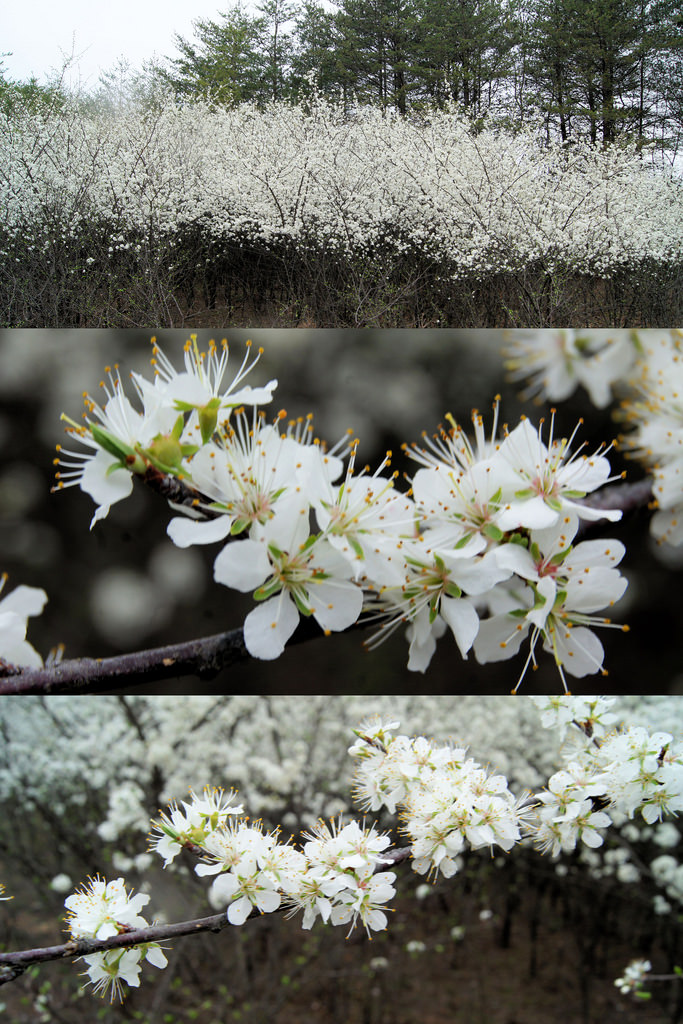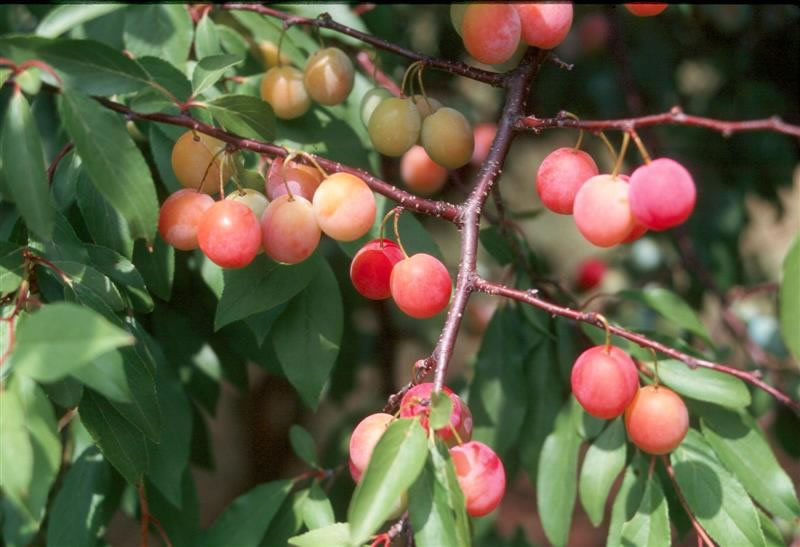Chickasaw Plum
Prunus angustifolia Marsahall
Description
Chickasaw plum is a shrub or small tree that rarely exceeds 25 feet tall and is a member of the rose family (Rosaceae) ². Young stems are reddish and have branches that form thorns 5. Its leaves are alternate, 1 to 3 inches long, and have serrated margins ¹. The leaf petiole bears two small, red glands at its apex 5. It flowers in early spring with clusters of 2 to 4 flowers about 0.5 inch across ². The 0.5-inch plums ripen to a yellow or red in late spring or early summer ².

Flowers of Chikasaw plum. B. Harms, Maryland Biodiversity Project ³

Fruits of Chickasaw plum. LSU4
Distribution
Chickasaw plum grows in the southern US from Pennsylvania to California 5. In Maryland it is largely found on the Western Shore of the Chesapeake Bay ³. 
Natural range of Chickasaw plum. Wikimedia Commons 6
Wildlife Importance
Thickets of Chicksaw plum provide habitats and nesting sites for numerous birds such as bobwhites, brown thrashers, gray catbirds, loggerhead shrike and painted buntings 5. In addition birds consume the fruits ¹. The plant is host for several species of butterfly including the Coral Hairstreak and Eastern River Swallowtail ¹.
Economic Importance
The attractive early blooms have horticultural interest and the fruit is used for wines, jams and jellies 5.
Threats
Fruit damage can be caused by plum curculio and major disease can be caused by brown rot of the fruit and bacterial leaf spot 5. Deer and herbivores may eat leaves and bark 5.
Interesting Facts
- Chickasaw plum is used for stabilizing soil along stream banks5.
- Chickasaw plum was first cultivated in 1874 5.
References
- North Carolina Extension: Prunus angustifolia
- Missouri Botanical Gardens; Prunus angustifolia
- Maryland Biodiversity Project: Chickasaw plum
- Louisiana State University: Prunus angustifolia
- USDA NRCS Plant Guide: Chickasaw Plum
- Wikimedia Commons: Prunus angustifolia
Contributed by J. Hull
